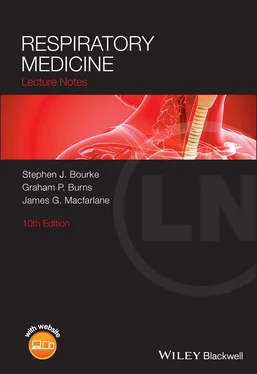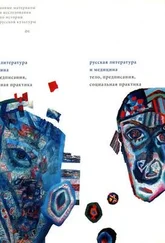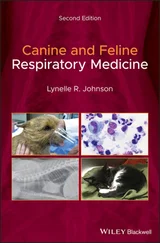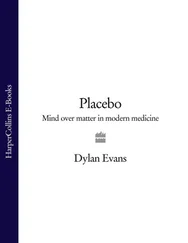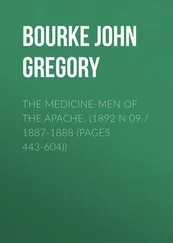The lung is ventilated by air and perfused by blood. For gas exchange, to occur these two elements must come into intimate contact.
An inspired breath brings air into the lung. That air does not distribute itself evenly, however. Some parts of the lung are more compliant than others, and are therefore more accommodating. This variability in compliance occurs on a gross scale across the lungs (upper zones verses lower zones) and also on a very small scale in a more random pattern. At the gross level, the lungs can be imagined as ‘hanging’ inside the thorax and resting on the diaphragm; the effect of gravity means that the upper parts of the lungs are under considerable stretch, whilst the bases sit relatively compressed on the diaphragm. During inspiration (as the diaphragm descends) the upper parts of the lung, which were already stretched, cannot expand much more to accommodate the incoming air; the bases, on the other hand, are ripe for inflation. Therefore, far more of each inspired breath ends up in the lower zones than the upper zones.
On a small scale, adjacent lobules or even alveoli may not have the same compliance. Airway anatomy is not precisely uniform either, and airway resistance between individual lung units will vary. It can therefore be seen that ventilation will vary in an apparently random fashion on a small scale throughout the lung. This phenomenon may be rather modest in health, but is likely to be exaggerated in many lung diseases in which airway resistance or lung compliance is affected.
The pulmonary circulation operates under much lower pressure than the systemic circulation. At rest, the driving pressure is only on the order of 15 mmHg. In the upright posture, therefore, there is barely enough pressure to fill the upper parts of the system and the apices of the lung receive very little perfusion at all from the pulmonary circulation. The relative over perfusion of the bases mirrors the pattern seen with ventilation (which is fortunate, if our aim is to bring blood and air into contact), but the disparity is even greater in the case of perfusion. Thus, at the bases of the lungs, perfusion exceeds ventilation, while, at the apices, ventilation exceeds perfusion.
The distribution of perfusion is also heavily influenced by another factor: hypoxia. By a mechanism we do not fully understand, low oxygen levels in a region of the lung have a direct vasoconstrictor effect on the pulmonary artery supplying that region. This has the beneficial effect of diverting blood away from the areas of lung that are poorly ventilated towards the well‐ventilated areas. This ‘automatic’ ventilation/perfusion (V/Q) matching systemaims to maximise the contact between air and blood and is critically important to gas exchange.
Relationship between the partial pressures of O2 and CO2
During steady‐state conditions, the relationship between the amount of carbon dioxide produced by the body and the amount of oxygen absorbed depends upon the metabolic activity of the body. This is referred to as the ‘respiratory quotient’ (RQ).

The actual value varies from 0.7 during pure fat metabolism to 1.0 during pure carbohydrate metabolism. The RQ is usually about 0.8, and it is assumed to be such for everyday clinical calculations.
If carbon dioxide is being produced by the body at a constant rate then the partial pressure of CO 2(PCO 2) of alveolar air (written P ACO 2) depends only upon the amount of outside air with which the carbon dioxide is mixed in the alveoli; that is, it depends only upon alveolar ventilation. If alveolar ventilation increases, P ACO 2will fall; if alveolar ventilation decreases, P ACO 2will rise. P ACO 2(as well as arterial PCO 2, written P aCO 2) is a sensitive index of alveolar ventilation.
The partial pressure of alveolar O 2(P AO 2) also varies with alveolar ventilation. If alveolar ventilation increases greatly then P AO 2will rise and begin to approach the PO 2of the inspired air. If alveolar ventilation is reduced, P AO 2will also be reduced. Whilst arterial PO 2(written P aO 2) also varies with alveolar ventilation (in the same direction as alveolar PO 2), it is not a reliable index of alveolar ventilation, as it is also profoundly affected by regional changes in V/Q matching (see later in this chapter).
The possible combinations of PCO 2and PO 2in alveolar gas are shown in Fig. 1.8. Moist atmospheric air at 37 °C has a PO 2is between 20 and 21 kPa. In this model, oxygen can be exchanged with carbon dioxide in the alveoli to produce any combination of P AO 2and P ACO 2described by the oblique line which joins P AO 220 kPa and P ACO 220 kPa. The position of the cross on this line represents the composition of a hypothetical sample of alveolar air. A fall in alveolar ventilation will result in an upward movement of this point along the line; conversely, an increase in alveolar ventilation will result in a downward movement of the point.

Figure 1.8 Oxygen–carbon dioxide diagram. The continuous and interrupted lines describe the possible combinations of PCO 2and PO 2in alveolar air when the RQ is 1 versus 0.8. When the alveolar gas composition is represented by ‘+’ then (a) represents the partial pressures in arterial blood. With progressive underventilation the arterial blood pressures would change to (b). At (c) the PO 2is lower than can be accounted for by underventilation alone.
In practice, RQ is not 1.0 but closer to 0.8. In other words:

This is represented by the dotted line in Fig. 1.8.
Point (a) represents the PCO 2and PO 2of arterial blood(it lies a little to the left of the RQ 0.8 line because of the small normal alveolar–arterial oxygen tension difference). Point (b) represents the arterial gas tension following a period of underventilation. If the P aCO 2and P aO 2were those represented by point (c), this would imply that the fall in P aO 2was more than could be accounted for by reduced alveolar ventilation alone. This would indicate a problem with V/Q matching and thus gas exchange (see below and Chapter 3).
The carriage of CO2 and O2 by blood
Blood will carry different quantities of a gas when it is at different partial pressures, as described by a dissociation curve. The dissociation curves for oxygen and carbon dioxide are very different (they are shown together on the same scale in Fig. 1.9). The amount of carbon dioxide carried by the blood is roughly proportional to the P aCO 2over the whole range normally encountered, whereas the quantity of oxygen carried is only proportional to the P aO 2over a very limited range of about 3–7 kPa (22–52 mmHg). Above 13.3 kPa (100 mmHg), the haemoglobin is fully saturated. Further increases in partial pressure result in hardly any additional oxygen being carried.
Effect of local differences in V/Q
In the normal lung, the vast majority of alveoli receive ventilation and perfusion in about the correct proportion ( Fig. 1.10a). In diffuse disease of the lung, however, it is usual for ventilation and perfusion to be irregularly distributed, so that a greater scatter of V/Q ratios is encountered ( Fig. 1.10b). Even if the overall V/Q remains normal, there is wide local variation in V/Q. Looking at Fig. 1.10, it is tempting to suppose the effects of the alveoli with low V/Q might be nicely balanced by the alveoli with high V/Q. In fact, this is not the case: the increased range of V/Q within the lung affects the transport of CO 2and O 2differently.
Читать дальше
